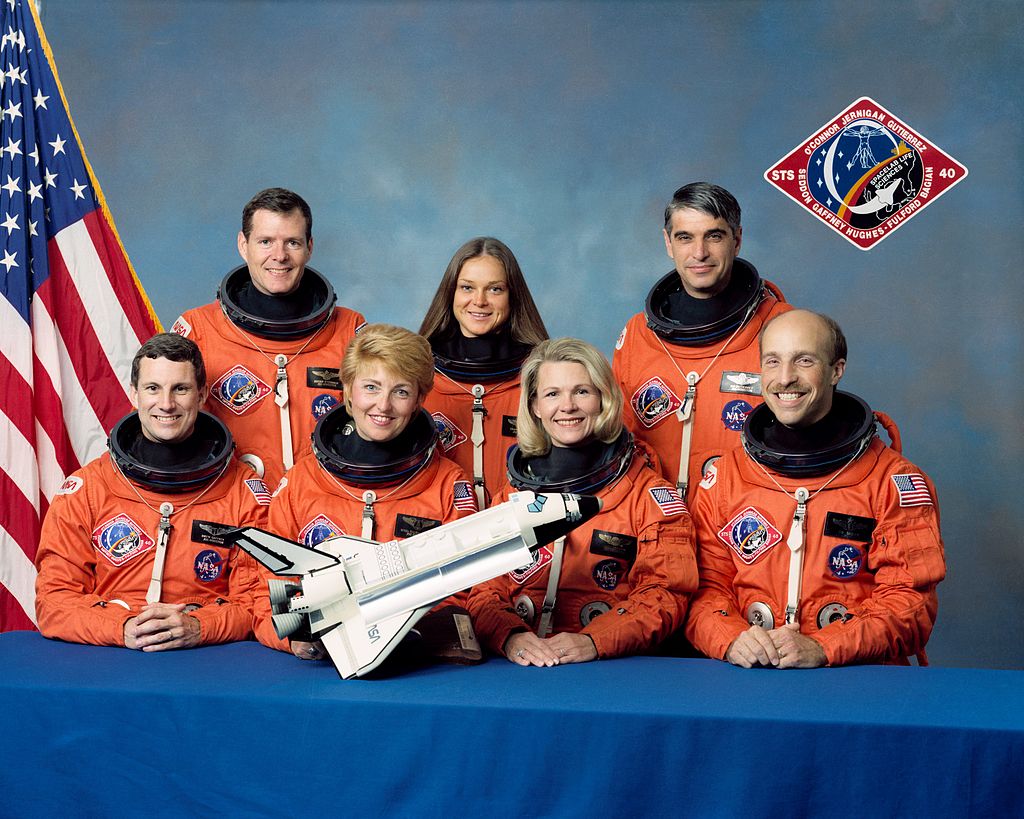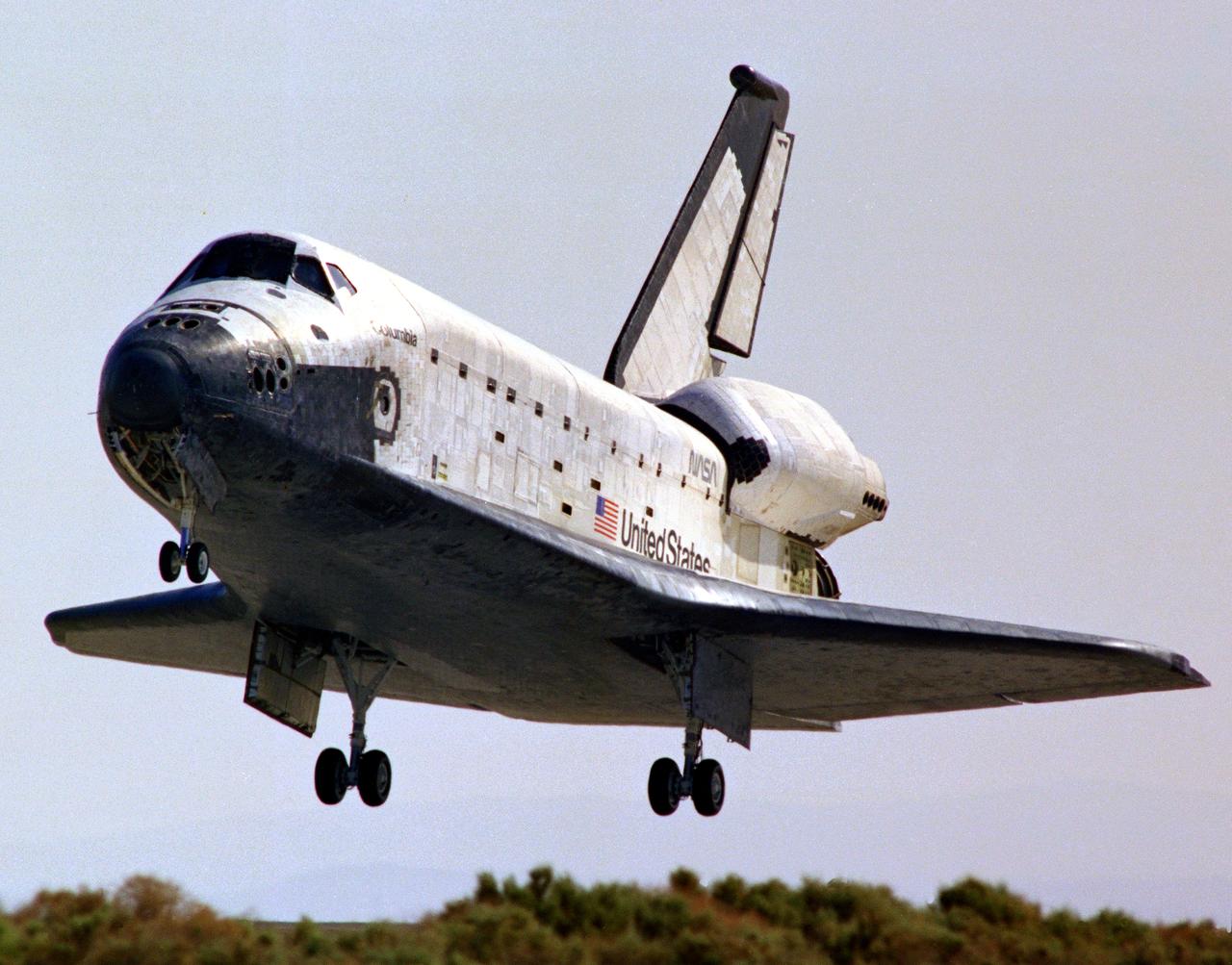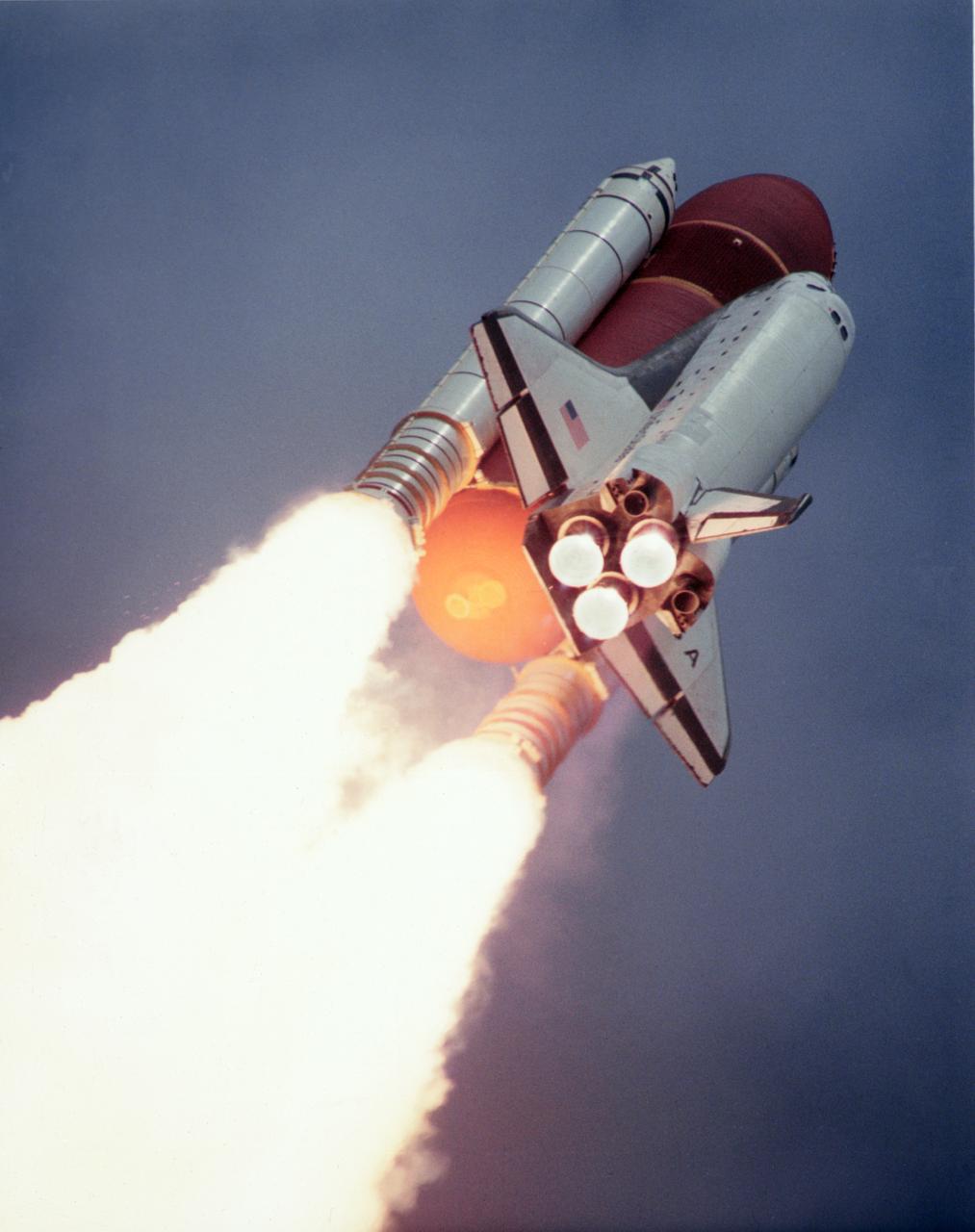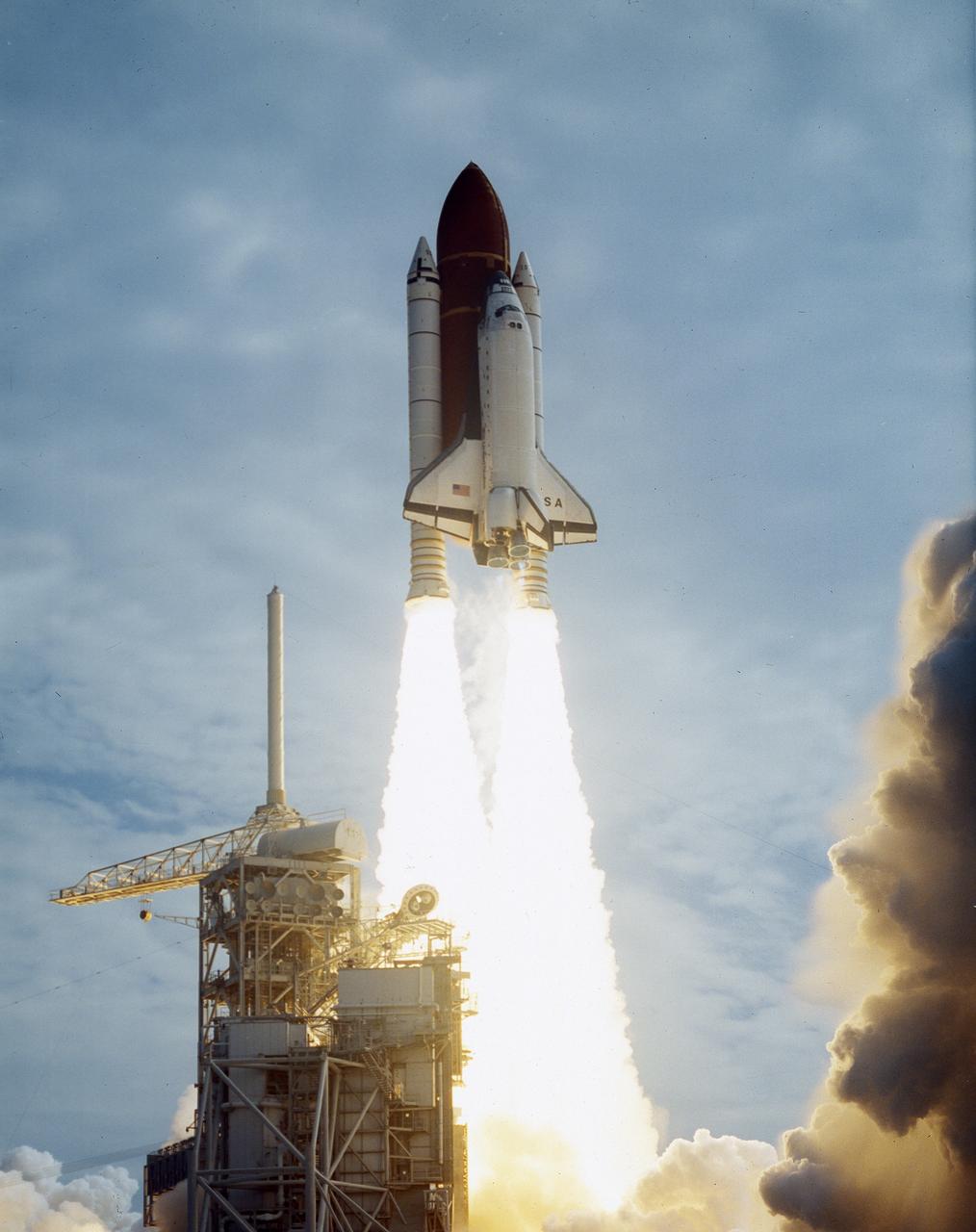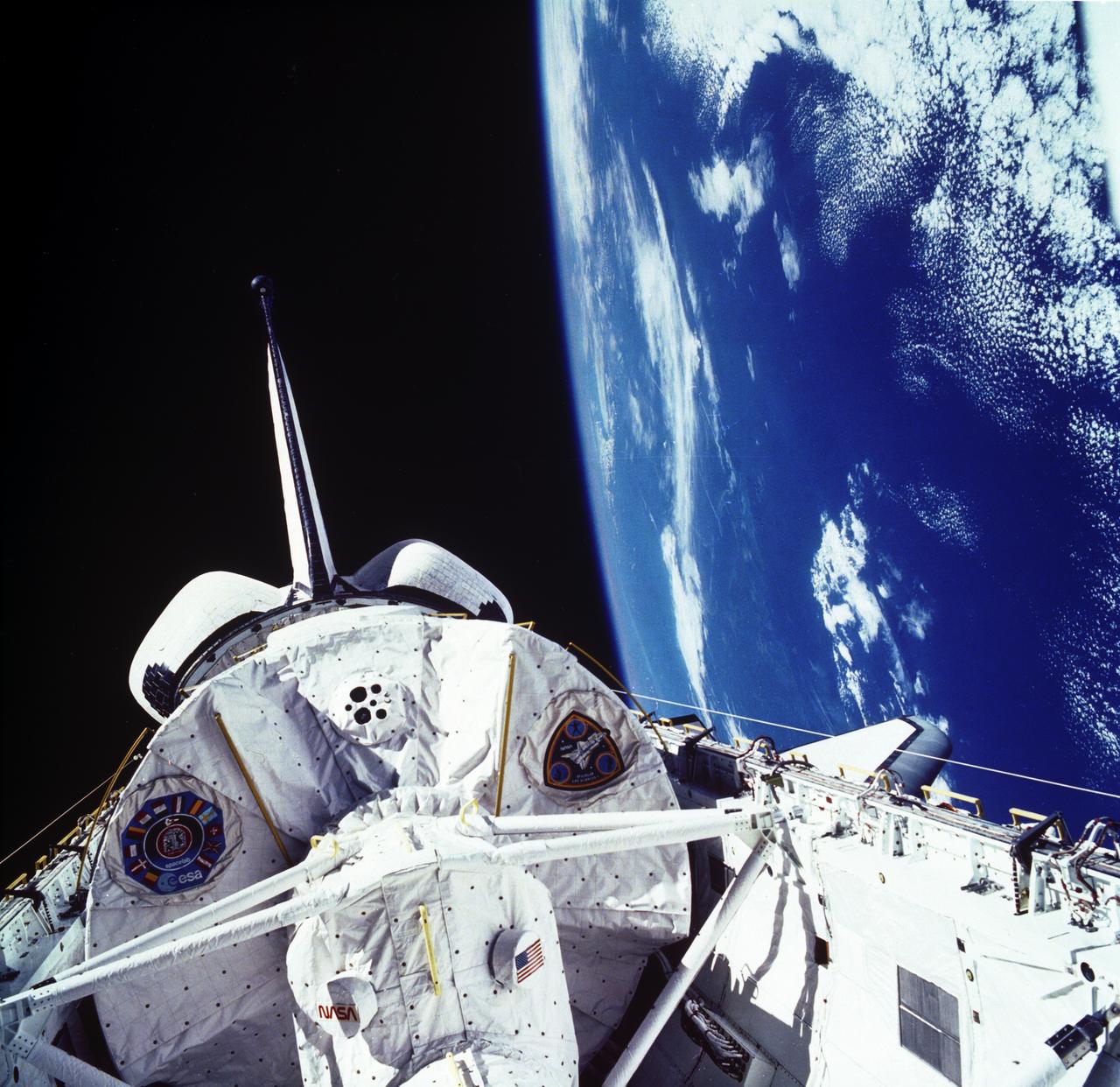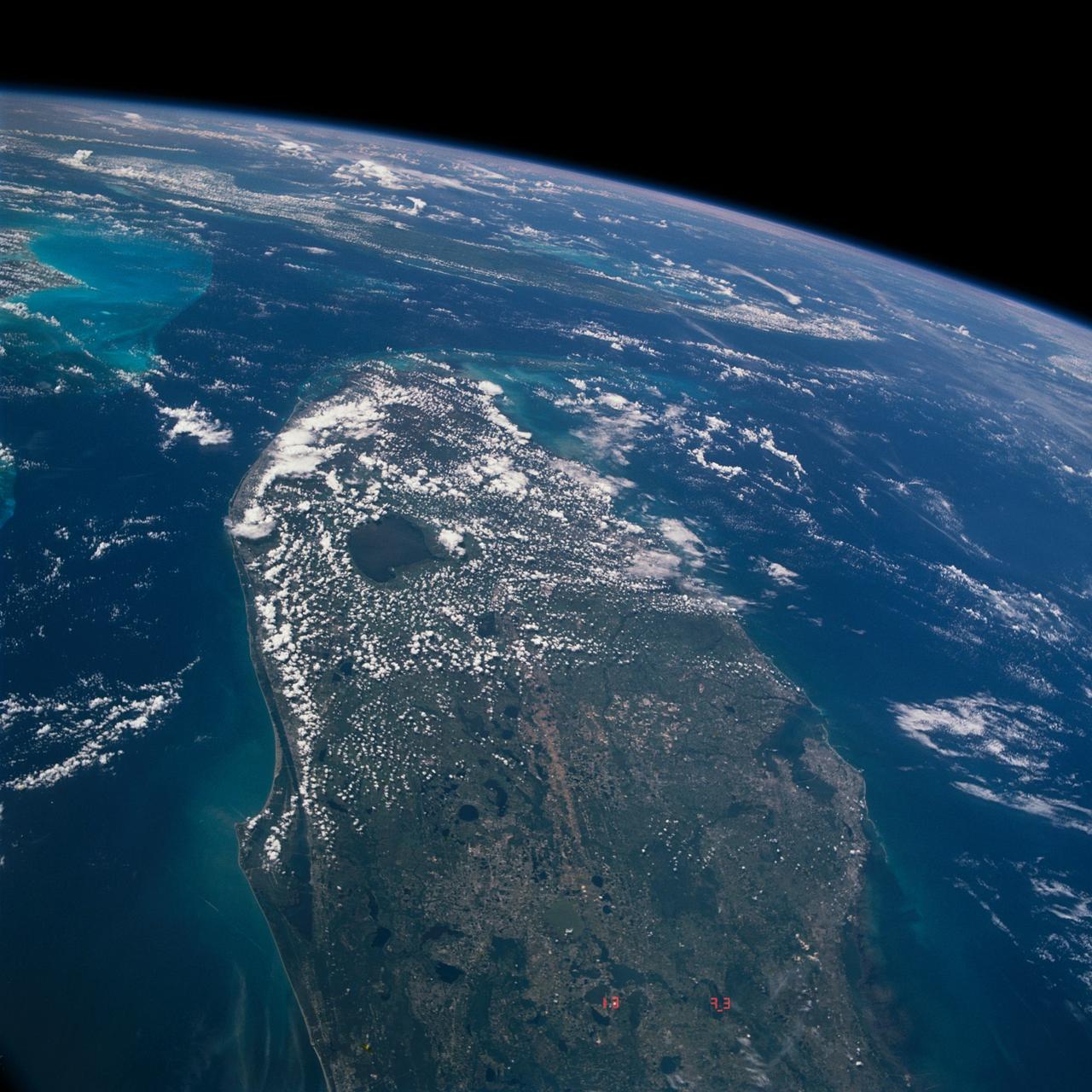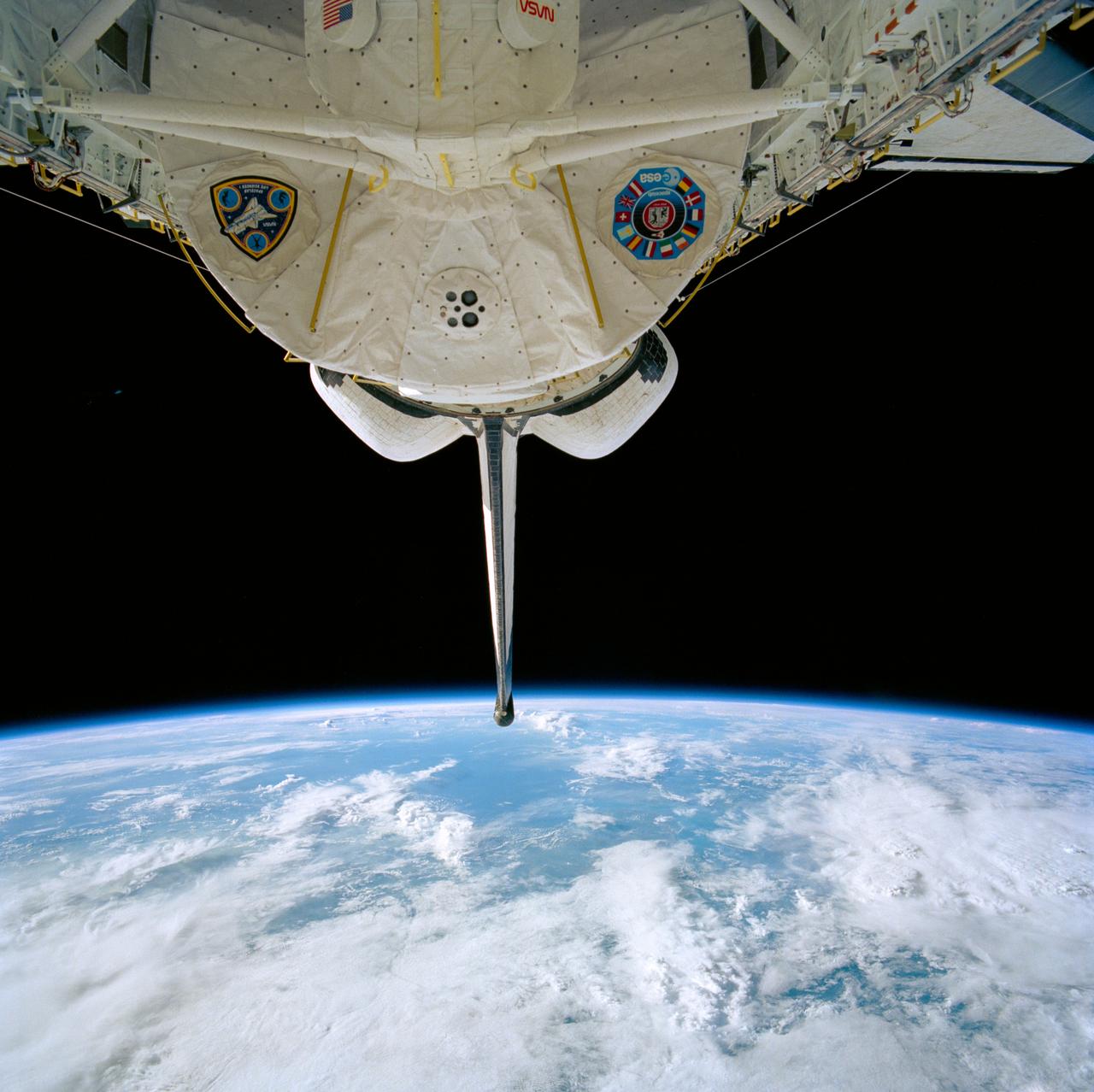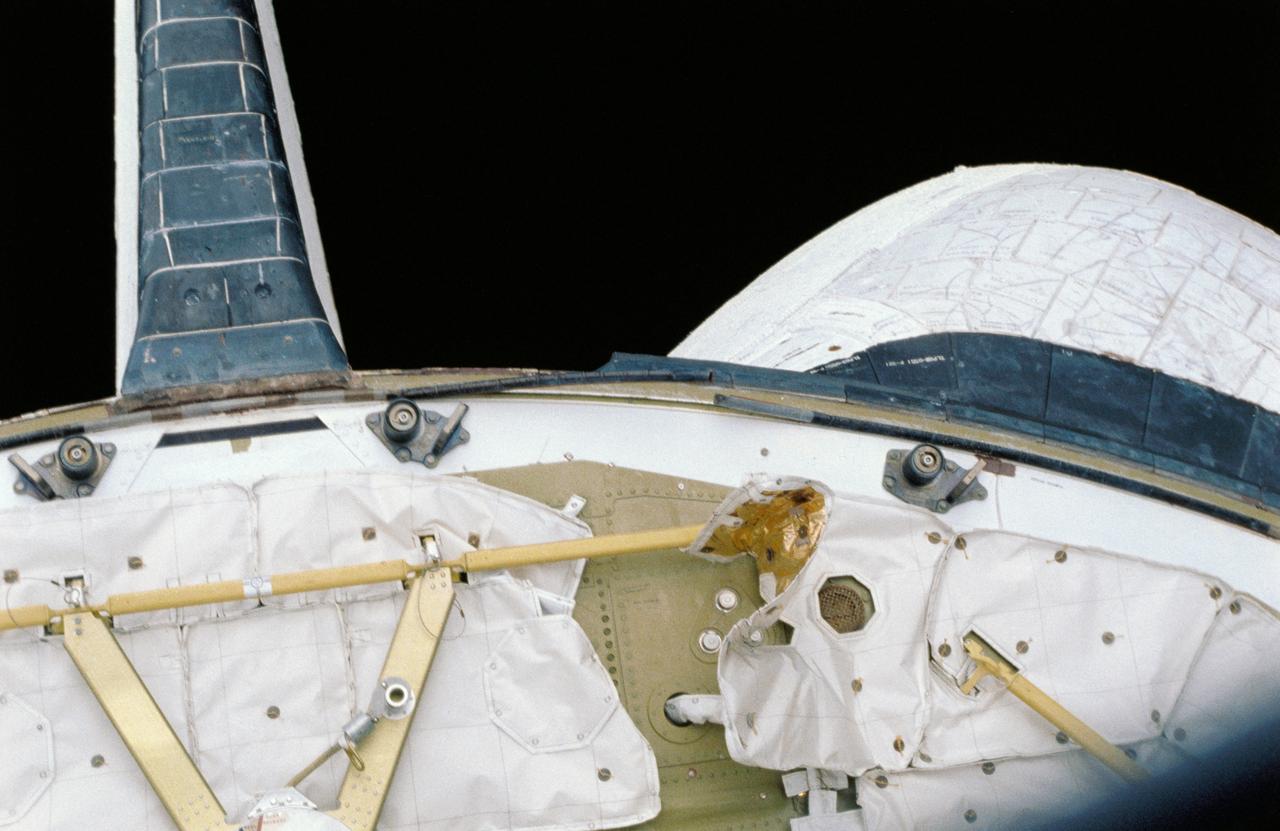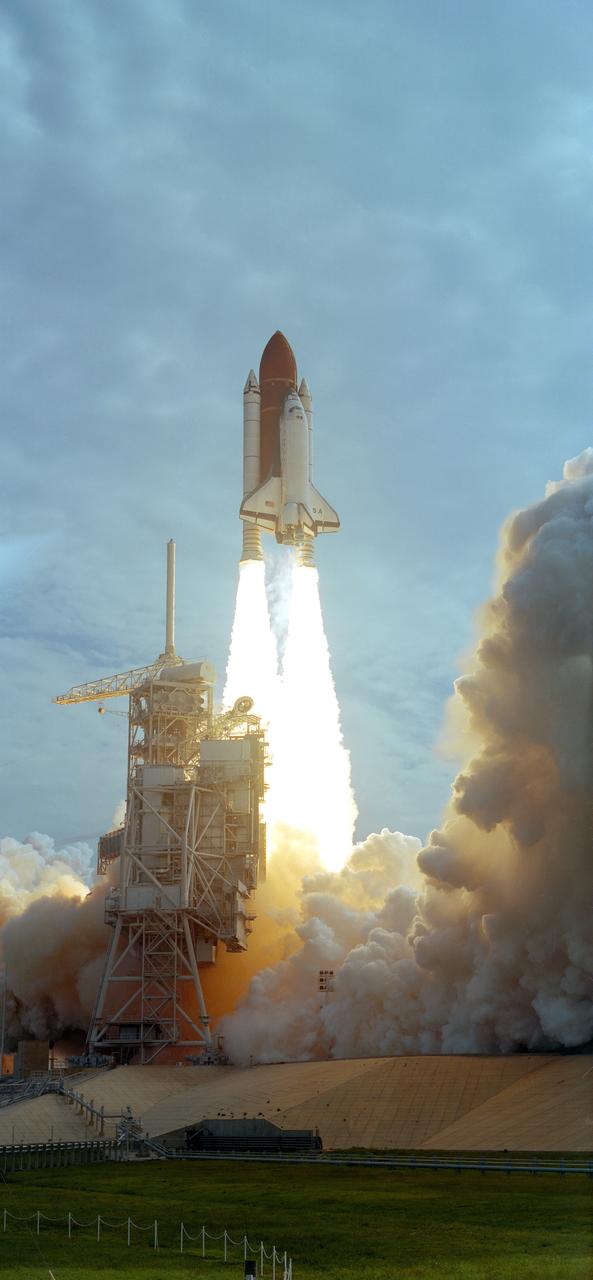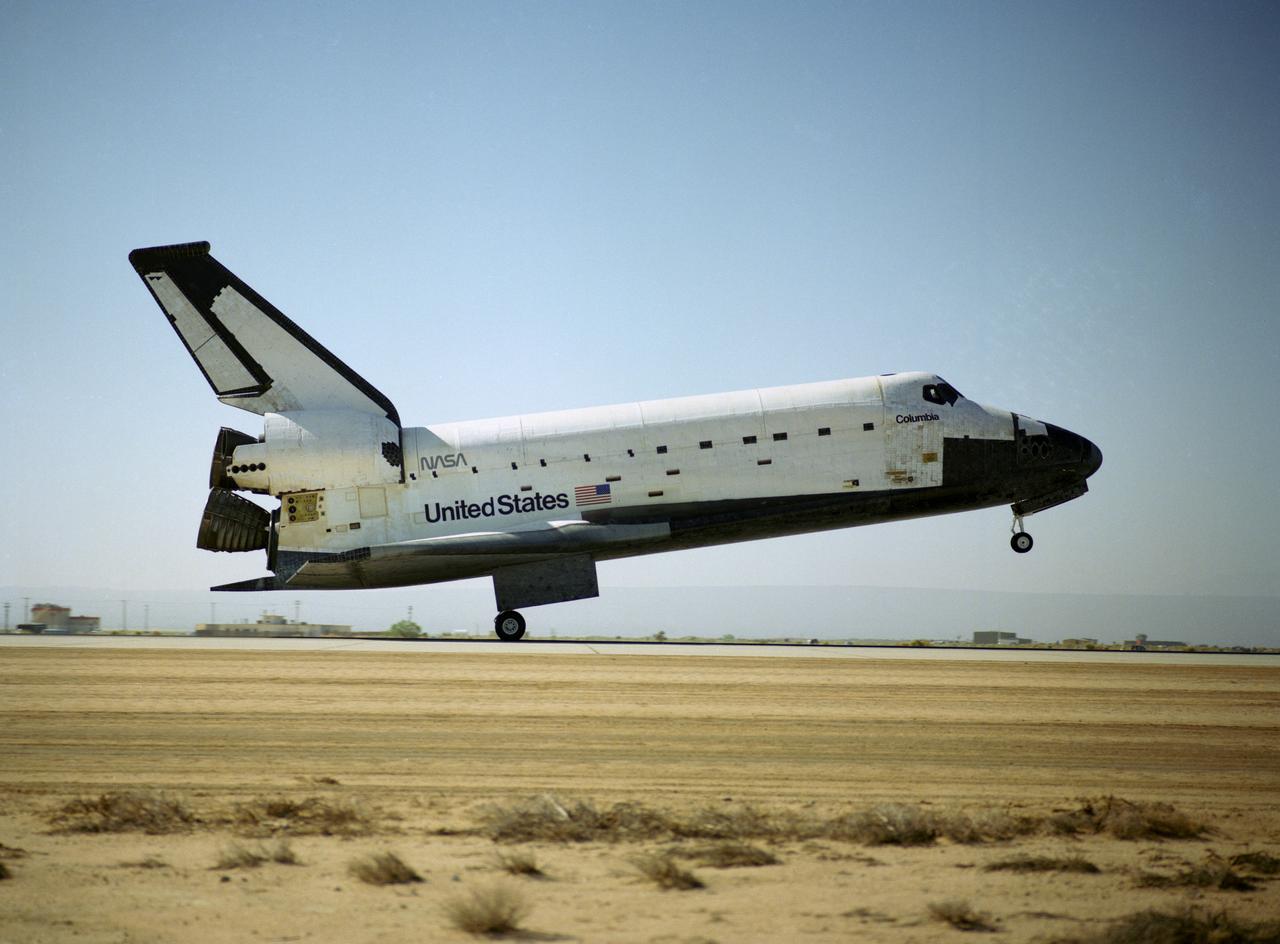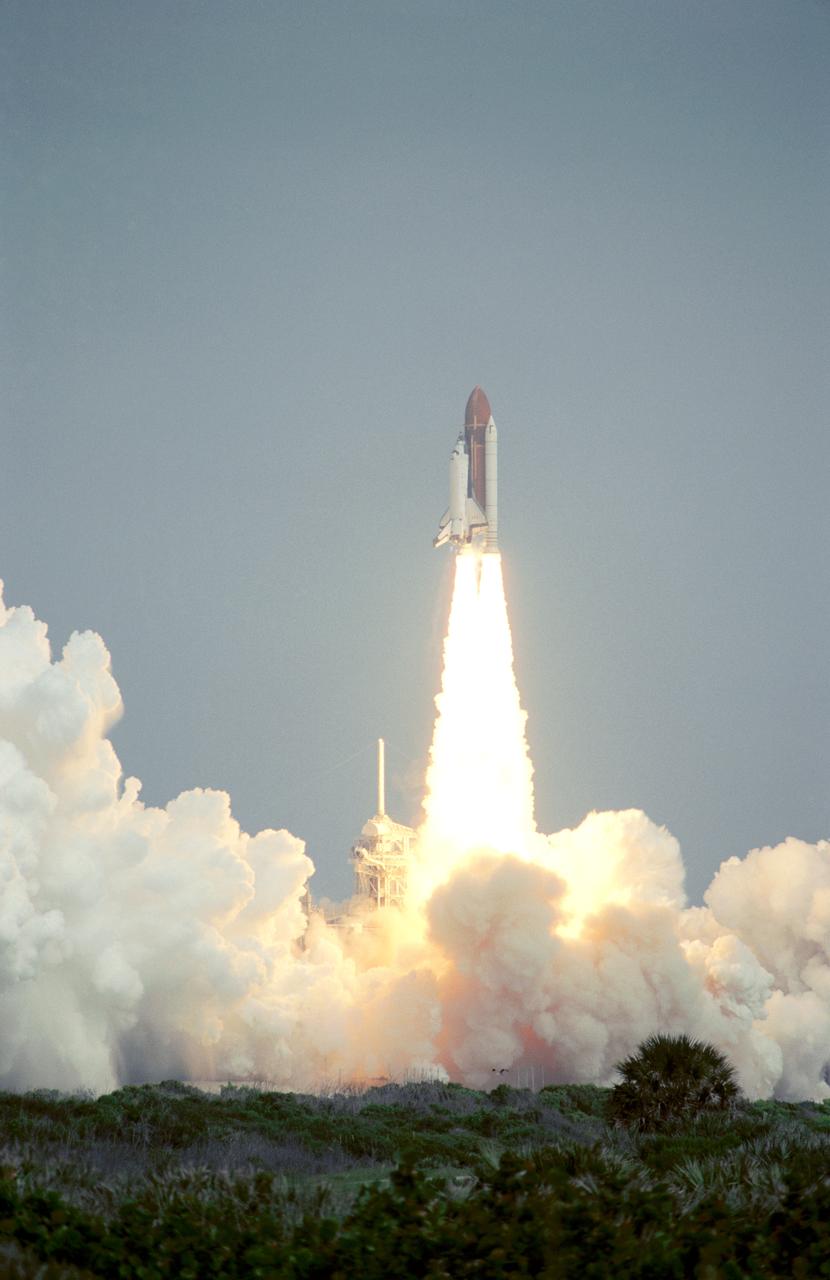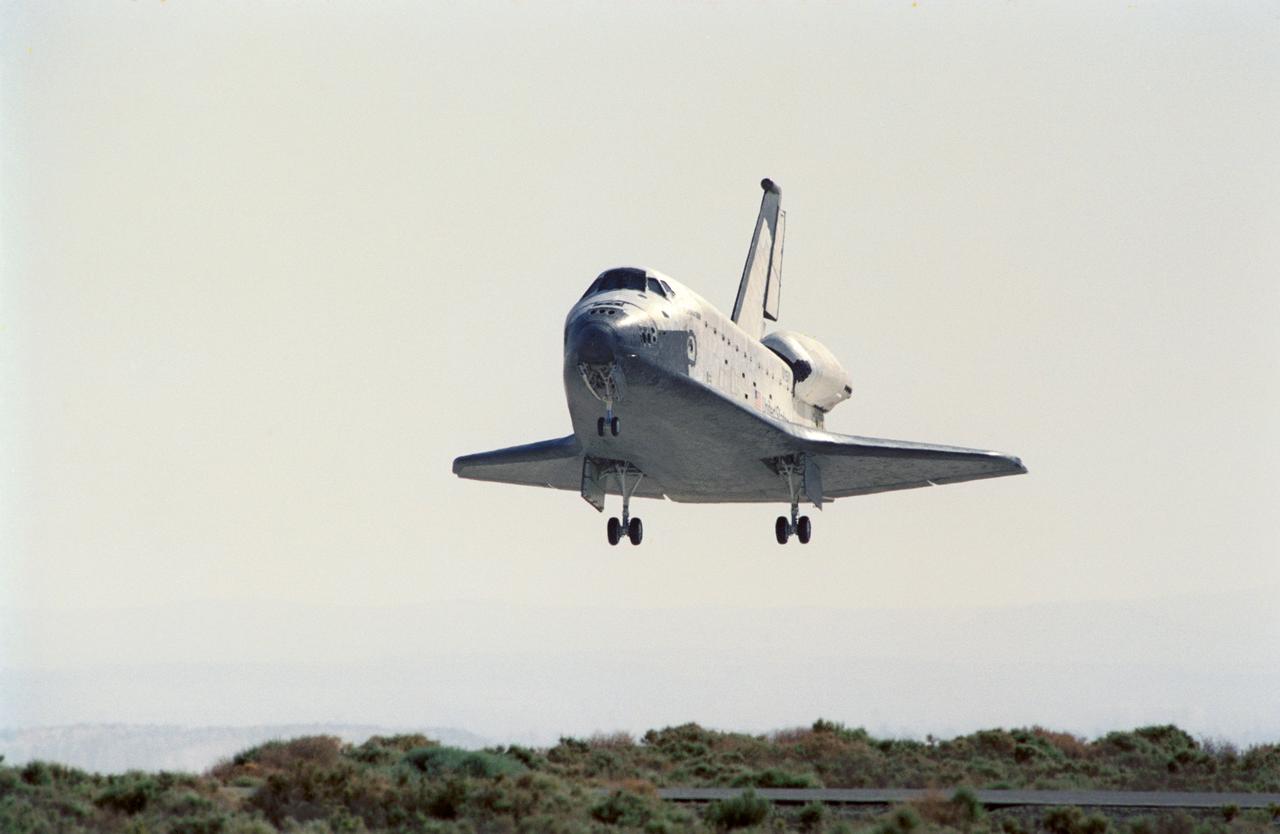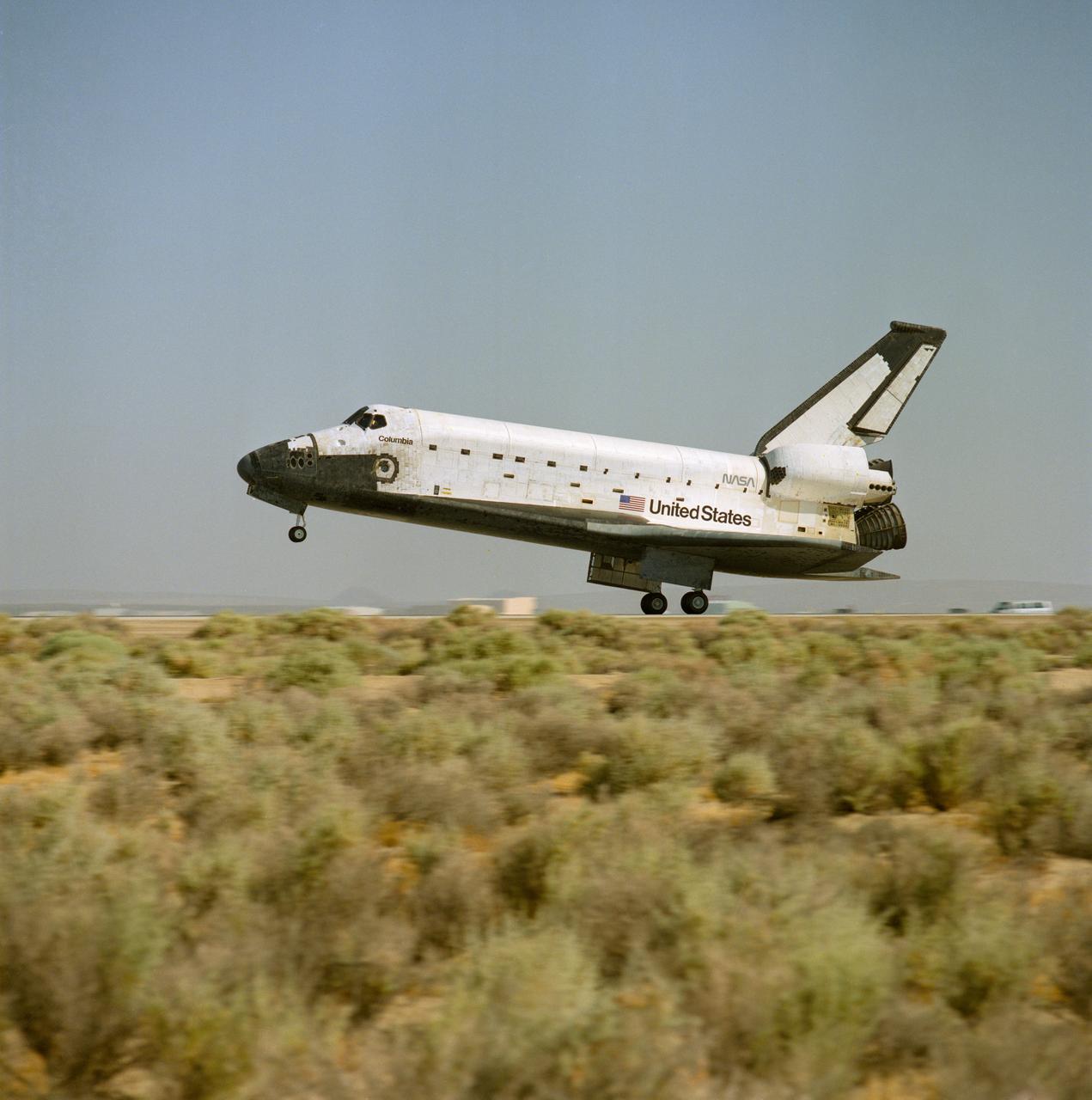STS-40 Fact Sheet
By Cliff Lethbridge

STS-40 — Columbia
41st Space Shuttle Mission
11th Flight of Columbia
Crew:
Bryan D. O’Connor, Commander
Sidney M. Gutierrez, Pilot
James P. Bagian, Mission Specialist
Tamara E. Jernigan, Mission Specialist
M. Rhea Seddon, Mission Specialist
F. Drew Gaffney, Payload Specialist
Millie Hughes-Fulford, Payload Specialist
Orbiter Preparations:
Tow to Orbiter Processing Facility – February 9, 1991
Rollover to Vehicle Assembly Building – April 26, 1991
Rollout to Launch Pad 39B – May 2, 1991
Launch:
June 5, 1991 – 9:24:51 a.m. EDT. Launch was originally scheduled for May 22, 1991, but was postponed less than 48 hours before launch when it was discovered that a leaking liquid hydrogen transducer which was removed and replaced from the Shuttle’s main propulsion system in 1990 had failed an analysis by the vendor. Engineers feared that faulty transducers could break off during flight, causing catastrophic main engine failure.
In addition, one of five of Columbia’s general purpose computers failed completely, along with one of the multiplexer/demultiplexers that control orbiter hydraulics ordnance and orbiter maneuvering system functions in the aft engine compartment.
A new general purpose computer and multiplexer/demultiplexer were installed. One liquid hydrogen and two liquid oxygen transducers were replaced upstream in the propellant flow system near the 17-inch disconnect area.
Three liquid oxygen transducers were replaced in the engine manifold area. Three liquid hydrogen transducers were removed completely and openings plugged. Launch was rescheduled for June 1, 1991, but postponed when several attempts to calibrate Inertial Measurement Unit Number Two failed. Malfunctioning unit was replaced, and launch was reset for June 5, 1991. June 5 launch occurred as scheduled with no delays.
Landing:
June 14, 1991 – 8:39:11 a.m. PDT at Runway 22, Edwards Air Force Base, California. Rollout distance was 9,438 feet. Rollout time was 55 seconds. Mission duration was 9 days, 2 hours, 14 minutes, 20 seconds. Landing occurred during the 146th orbit.
Mission Summary:
This was the fifth dedicated Spacelab mission, manifested as Spacelab Life Sciences-1 (SLS-1), the first Spacelab dedicated exclusively to life sciences. The mission recorded the most detailed and complete physiological measurements in space since the Skylab program.
Primary subjects were the astronauts, 30 rodents and thousands of tiny jellyfish. Primary SLS-1 experiments studied six body systems. Of a total of 18 investigations, ten involved humans, seven involved rodents and one involved jellyfish. Other payloads included 12 GAS experiments, Middeck Zero-Gravity Dynamics Experiment (MODE) and seven Orbiter Experiments (OEX).
SELECTED NASA PHOTOS FROM STS-40
